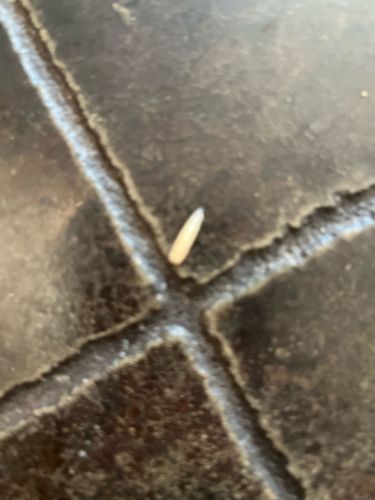Maggot (Fly Larva)
Scientific Name: Typically various species within the order Diptera
Order & Family: Order: Diptera (flies), Families vary significantly depending on species (e.g., Calliphoridae, Muscidae)
Size: Generally 0.5 cm to 2 cm (0.2 to 0.8 inches) in length, varying by species

Natural Habitat
Found in decaying organic matter, carrion, garbage, compost, feces, or sometimes in living tissues of animals (myiasis)
Diet & Feeding
Decomposing organic matter, including decaying flesh, vegetables, fruits, or fungi. Some are parasitic and feed on living tissues.
Behavior Patterns
Maggots are the larval stage of flies. They are typically slow-moving, legless, and worm-like. They focus on feeding and growing rapidly to prepare for pupation. They prefer moist environments and often burrow deeply into their food source. Their presence often indicates decomposition.
Risks & Benefits
Potential risks include being a vector for disease transmission (e.g., carrying bacteria from decaying matter to food), and some species can cause myiasis in humans and animals (infestation of living tissue). Benefits include their crucial role as decomposers in ecosystems, breaking down organic waste. Some species are also used in forensic entomology to determine time of death, and medical maggots (sterile larvae of specific species) are used for debridement therapy to clean wounds.
Identified on: 9/20/2025